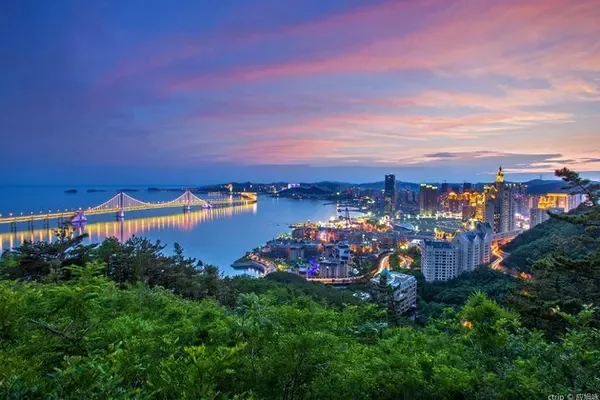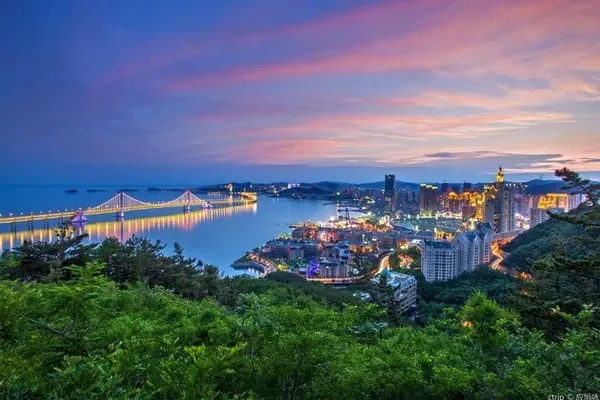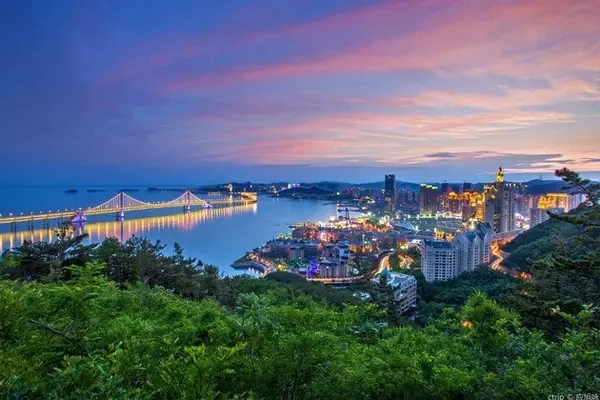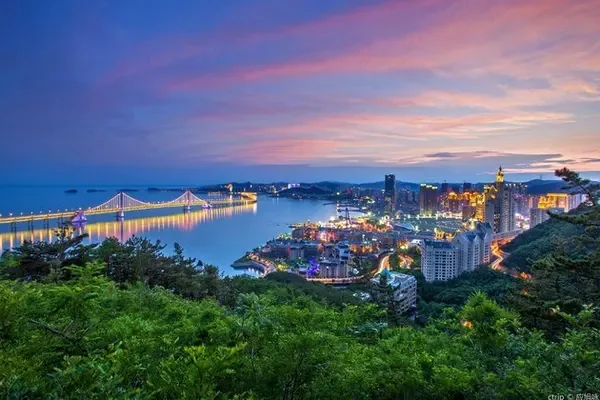Our old couple like to travel very much. I wanted to go to "Hukou Waterfall" in Shanxi, but I never found a suitable opportunity. My son remembered our wish, and took us, his father-in-law and mother-in-law to visit Shanxi on March 12, taking advantage of his free days.
It’s not one or two times since I followed my son out. We summed up some benefits: peace of mind (he will do his homework well in advance); eat well and live well (son hopes that letting us out is not just for fun , and take this opportunity to let us enjoy it); you can go to places that you can’t usually go with a group; he will ask the commentator to introduce us in detail when you go to many scenic spots (unlike a group tour in a hurry, and he will ask in advance People speak slower, walk slower).
So in this short five-day trip to the west of the mountain, we saw beautiful scenery, learned knowledge, and enjoyed a comfortable life. It was a very memorable and pleasant trip.
Itinerary: Departure from Beijing----"Xibaipo"---Taiyuan---"Jin Temple"--"Qikou Ancient Town"---Lvliang--"-Zhangbi Ancient Castle"---"Wang Family Courtyard" --- "Hongdong Big Locust Tree (Root-seeking) Scenic Spot" --- Linfen --- "Hukou Waterfall" --- Anyang --- "Yin Ruins" --- "Zhaozhou Bridge" --- Beijing.
Xibaipo, Shijiazhuang, Hebei is our first stop.
"Xibaipo" New China came from here.

The site of the Second Plenary Session of the Seventh Central Committee of the Communist Party of China. It is worth paying attention to: According to Chairman Mao's proposal at this meeting, the plenary meeting made six regulations:
Don't celebrate birthdays, don't give gifts, toast less, clap your hands less, don't use people's names as place names, and don't put Chinese comrades on the same level as Marx, Engels and Les.

Chairman Mao's office.

Chairman Mao's living room.

The former residence of Comrade Liu Shaoqi.

The former residence of Comrade Zhou Enlai.

typical.



A hotel full of strong Shanxi style.





"It's useless to go to Taiyuan if you don't go to Jinci Temple." When you come to Taiyuan, you must go to "Jin Temple".

"Jin Temple" and "Jin King Temple" were originally named "Tang Shuyu Temple". Founded in the Western Zhou Dynasty, it was built to commemorate Tang Shuyu, the founding prince of the Jin Kingdom, and his mother.
Tang Shuyu Statue

The mother's queen Yijiang is like a queen. There are dozens of statues of maids around her. Each character has lifelike images, vivid shapes and different moods.

"House of Our Lady". There are four words "fish marsh" and "flying beam" at the bridgehead in front of the hall.

The carved dragons on the pillars are extraordinary.

Uonuma Feiliang, built in the Song Dynasty, is in the shape of a cross bridge, like a roc spreading its wings, with elegant and generous shape and unique shape. The effect is highlighted from the air.

"Difficult Old Spring Pavilion". The Nanlaoquan, the painted sculptures of the Song Dynasty, and Zhou Bai and Tang Huai are the three wonders of the Jin Temple.

The "Shanliquan" is symmetrical with the Nanlaoquan. It is the third source of Jinshui.


"Dedication Hall". Place the gift. It is ventilated on all sides and has a fence, which is convenient for the storage of gifts. The pavilion didn't use a single nail.

"Golden Terrace". It is set in front of the "House of Our Lady", on which stand four iron men.

Three of them were cast in the Northern Song Dynasty. The iron man in the northeast corner was rebuilt in the Republic of China.

Wolong Zhou Bai. There used to be a cypress tree on both sides of the front of the Notre-Dame Hall. After the death of the right one, the left one began to tilt to the right. Later, a pagoda tree grew out next to it just to support it at the position of the branch. Protecting the cypress also protects the hall.

"Relic Raw Tower".

"Qikou Ancient Town". Located at the foot of Luliang Mountain, a small town by the Yellow River. From the Ming and Qing Dynasties to the Republic of China, it was an important commercial and trade center.

Dragon King Temple. The highest point of the town, a landmark building.

The stage opposite the temple.

This couplet on the stage is very interesting. Read it upside down.

The Yellow River (on the right) and the Qiushui River meet here to accumulate sediment, making the drop very large, second only to Hukou. After several blasts, the drop is now one meter.

The former pier.

It is convenient for horses and camels to walk. The corners of the buildings on both sides of the road are arc-shaped.

The residence of the richest family of the year. This side looks at one floor, and the other side has three floors.

Inside and outside the cave.


Couplets can be yellow, green, pink, red, which is a local folk custom in Shanxi.

A ditch was built in front of the gate. To facilitate unloading from livestock.


"Zhangbi Ancient Castle", one of China's top ten charming towns. It was built in 619 AD and has been in existence for more than 1400 years. Located in Zhangbi Village, Jiexiu City, Shanxi Province. It is surrounded by Mianshan Mountain in the south, and the other three sides are ravines. Relying on such geographical advantages, it has become a very successful village for ancient military fortifications.


The bricks in the middle of the road are arranged vertically to facilitate water flow, and the bricks on both sides are horizontally arranged to facilitate walking.

What is particularly striking is the authenticity here. It is about 10,000 meters long, with three upper and lower floors, extending in all directions, and it is well preserved.

The residence of the general in the tunnel.

The place where the prisoners stayed was short and narrow, and they couldn't stand upright.

Three-dimensional tee.

Temple halls were built from Song to Qing.


Beautiful sculpture.

A rare blue glazed stele.

Famous tree --- Huai Bao Liu.


I did not take a picture of this statue. Fortunately, he hid well, otherwise he would not have escaped the catastrophe of the Cultural Revolution. Many historic sites in Zhangbi Ancient Castle were built corresponding to the constellations. There are many stories and many mysteries waiting for further research and exploration.
"The Royal Courtyard". Located in Lingshi County, Shanxi Province. It was built over 300 years.



There are exquisite carvings everywhere inside and outside the courtyard. Each will have profound connotations. The following picture is about: the daughter-in-law feeds the milk to the elderly mother-in-law without caring about the crying child. Filial piety.



Hongdong County, Shanxi "The Scenic Area of Seeking the Roots of the Big Locust Tree". A holy place for folk sacrifices with the theme of "seeking roots" and "worshiping ancestors".

More than a dozen large-scale immigrations in the Ming Dynasty started here. The descendants of Hongdong migrants spread all over the country and even overseas. Their yearning for their homeland has become a place where they seek their roots and worship their ancestors.






Stay in Linfen Hotel.

Hukou Waterfall in Linfen.

The weather is sunny and the rainbow appears. Shaanxi on the other side.




A service area of the Lanqing Expressway that has just opened. (No signs are placed) We are the only car. In this season, the weather is fine and there are few cars on the road. It is a very good choice to stagger the holidays.

Check in hotel in Anyang.

Love the gorgeous interior of the hotel.


"Yin Ruins Royal Tomb Site"



Yin Ruins is located in Xi'an, Shanxi, and is the ruins of the capital of the late Shang Dynasty. It has a history of more than 3000 years. At the beginning of the 20th century, it became famous all over the world for the excavation of oracle bone inscriptions, so the archaeological excavation of Yin Ruins officially started. A large number of architectural ruins of the capital and cultural relics such as bronzes, jades, pottery, and bone wares were unearthed. Most of the Jongmyo ruins are expressed in short red wood.






More than 10,000 oracle bone fragments are piled up here. It was unearthed in 1936.

These two bronze vessels are usually used as cooking utensils. And this steamed inside is a human head. This is the Shang Dynasty against prisoners of war
Or a form of punishment for slaves.

This is a carriage. In front are the two people buried with him. Judging from the armor on their heads, they should not be ordinary soldiers.

The only well-preserved royal tomb of the Shang Dynasty in the Yin Ruins is the Tomb of Fuhao.
Fuhao, wife of Yin Wang Wuding. During his lifetime, he participated in major national affairs, engaged in wars, presided over sacrifices, etc., and his status was quite prominent. She is the earliest heroine in China.

There are more than 2,000 burial objects in the tomb.


The remains of those buried with him can be seen on the edge of the grave.

"s". It is located on the Ming River in Zhao County, Hebei Province. The span is 37 meters. The bridge body is all built of stone, so it is also called "Big Stone Bridge". Built in the Sui Dynasty, it has a history of more than 1,400 years. It is the earliest and best-preserved ancient single-hole open-shouldered stone arch bridge in the world today.



Shanxi is located in the Central Plains, with a long history, many places of interest and profound cultural heritage, it is a very worthwhile place to visit. The pleasant trip is over, the knowledge has been expanded, the horizon has been broadened, and a deep memory has been left.



